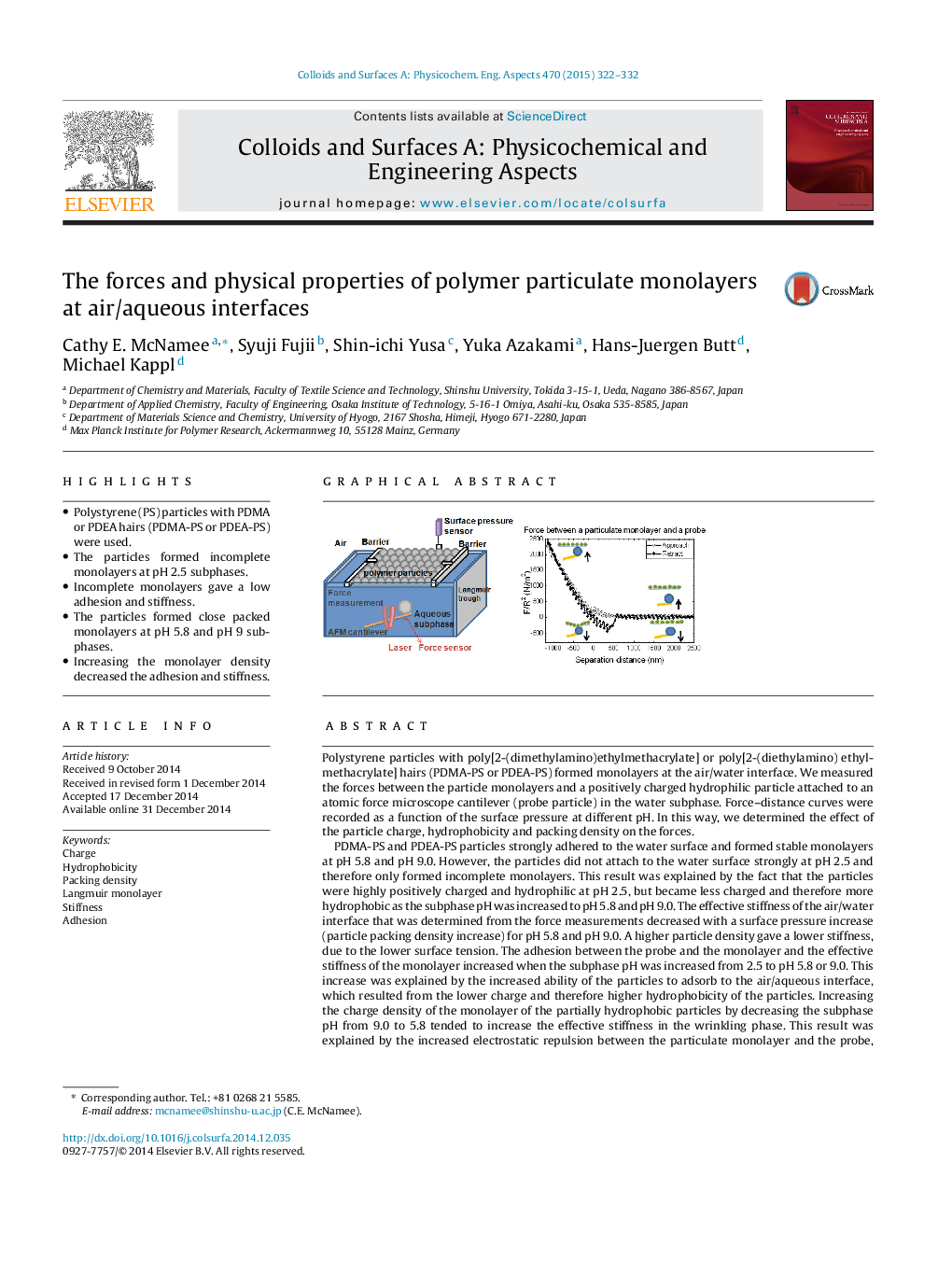| Article ID | Journal | Published Year | Pages | File Type |
|---|---|---|---|---|
| 592260 | Colloids and Surfaces A: Physicochemical and Engineering Aspects | 2015 | 11 Pages |
•Polystyrene (PS) particles with PDMA or PDEA hairs (PDMA-PS or PDEA-PS) were used.•The particles formed incomplete monolayers at pH 2.5 subphases.•Incomplete monolayers gave a low adhesion and stiffness.•The particles formed close packed monolayers at pH 5.8 and pH 9 subphases.•Increasing the monolayer density decreased the adhesion and stiffness.
Polystyrene particles with poly[2-(dimethylamino)ethylmethacrylate] or poly[2-(diethylamino) ethylmethacrylate] hairs (PDMA-PS or PDEA-PS) formed monolayers at the air/water interface. We measured the forces between the particle monolayers and a positively charged hydrophilic particle attached to an atomic force microscope cantilever (probe particle) in the water subphase. Force–distance curves were recorded as a function of the surface pressure at different pH. In this way, we determined the effect of the particle charge, hydrophobicity and packing density on the forces.PDMA-PS and PDEA-PS particles strongly adhered to the water surface and formed stable monolayers at pH 5.8 and pH 9.0. However, the particles did not attach to the water surface strongly at pH 2.5 and therefore only formed incomplete monolayers. This result was explained by the fact that the particles were highly positively charged and hydrophilic at pH 2.5, but became less charged and therefore more hydrophobic as the subphase pH was increased to pH 5.8 and pH 9.0. The effective stiffness of the air/water interface that was determined from the force measurements decreased with a surface pressure increase (particle packing density increase) for pH 5.8 and pH 9.0. A higher particle density gave a lower stiffness, due to the lower surface tension. The adhesion between the probe and the monolayer and the effective stiffness of the monolayer increased when the subphase pH was increased from 2.5 to pH 5.8 or 9.0. This increase was explained by the increased ability of the particles to adsorb to the air/aqueous interface, which resulted from the lower charge and therefore higher hydrophobicity of the particles. Increasing the charge density of the monolayer of the partially hydrophobic particles by decreasing the subphase pH from 9.0 to 5.8 tended to increase the effective stiffness in the wrinkling phase. This result was explained by the increased electrostatic repulsion between the particulate monolayer and the probe, which caused the probe to contact the monolayer less and therefore to physically perturb the monolayer less. Increasing the hydrophobicity of the particles increased the stiffness of the monolayer, due to the stronger inter-particle hydrophobic attractions.
Graphical abstractFigure optionsDownload full-size imageDownload as PowerPoint slide
